Analyzing Diabetes with Hypovolemic Shock: A Detailed Case Study
VerifiedAdded on 2022/11/30
|13
|1173
|398
Case Study
AI Summary
This case study delves into the complexities of managing a patient with diabetes experiencing hypovolemic shock. It outlines the primary vital signs to monitor, including rapid heartbeat, shallow breathing, and low blood pressure, and emphasizes the importance of early diagnosis and intervention. The study details the medication chart, focusing on intravenous fluid administration, blood transfusions, and drugs like dopamine and epinephrine to improve circulation and prevent septic shock. Nursing interventions, such as regulating insulin levels and monitoring blood glucose, are also highlighted. The case study concludes by stressing the critical nature of timely medication and intervention to improve patient outcomes and reduce life-threatening complications. Desklib offers similar solved assignments and study resources for students.
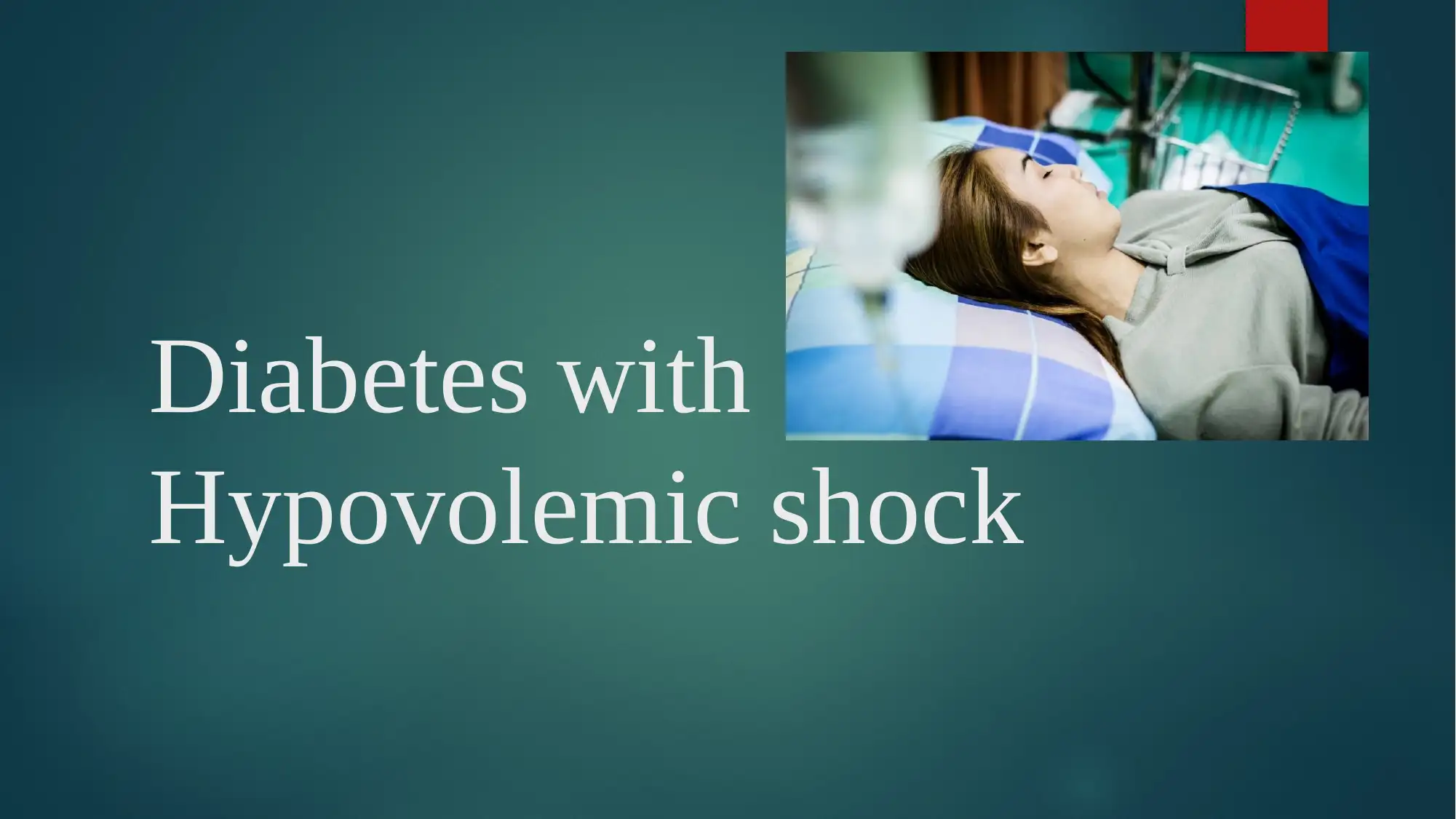
Diabetes with
Hypovolemic shock
Hypovolemic shock
Paraphrase This Document
Need a fresh take? Get an instant paraphrase of this document with our AI Paraphraser
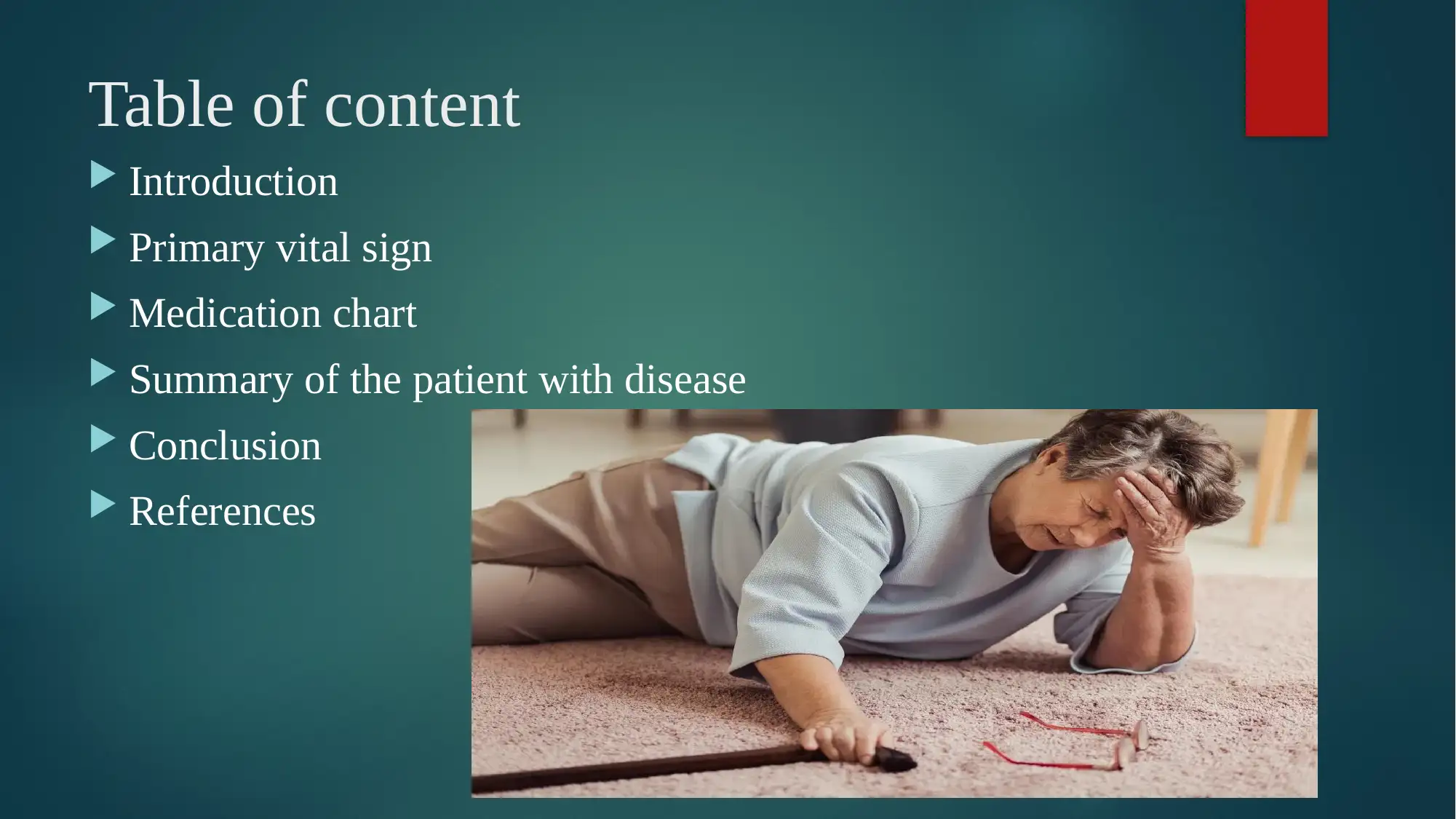
Table of content
Introduction
Primary vital sign
Medication chart
Summary of the patient with disease
Conclusion
References
Introduction
Primary vital sign
Medication chart
Summary of the patient with disease
Conclusion
References
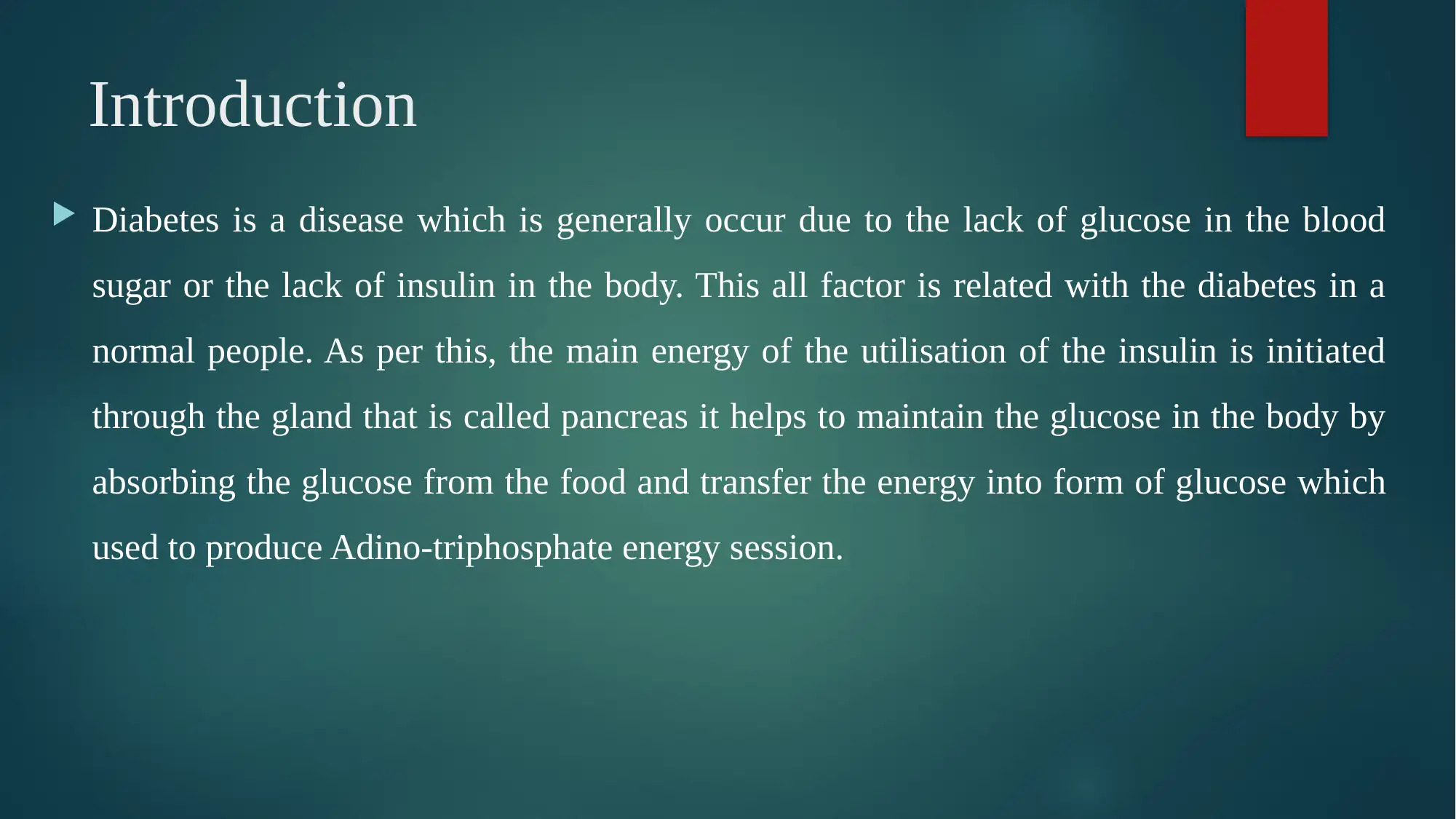
Introduction
Diabetes is a disease which is generally occur due to the lack of glucose in the blood
sugar or the lack of insulin in the body. This all factor is related with the diabetes in a
normal people. As per this, the main energy of the utilisation of the insulin is initiated
through the gland that is called pancreas it helps to maintain the glucose in the body by
absorbing the glucose from the food and transfer the energy into form of glucose which
used to produce Adino-triphosphate energy session.
Diabetes is a disease which is generally occur due to the lack of glucose in the blood
sugar or the lack of insulin in the body. This all factor is related with the diabetes in a
normal people. As per this, the main energy of the utilisation of the insulin is initiated
through the gland that is called pancreas it helps to maintain the glucose in the body by
absorbing the glucose from the food and transfer the energy into form of glucose which
used to produce Adino-triphosphate energy session.
⊘ This is a preview!⊘
Do you want full access?
Subscribe today to unlock all pages.

Trusted by 1+ million students worldwide
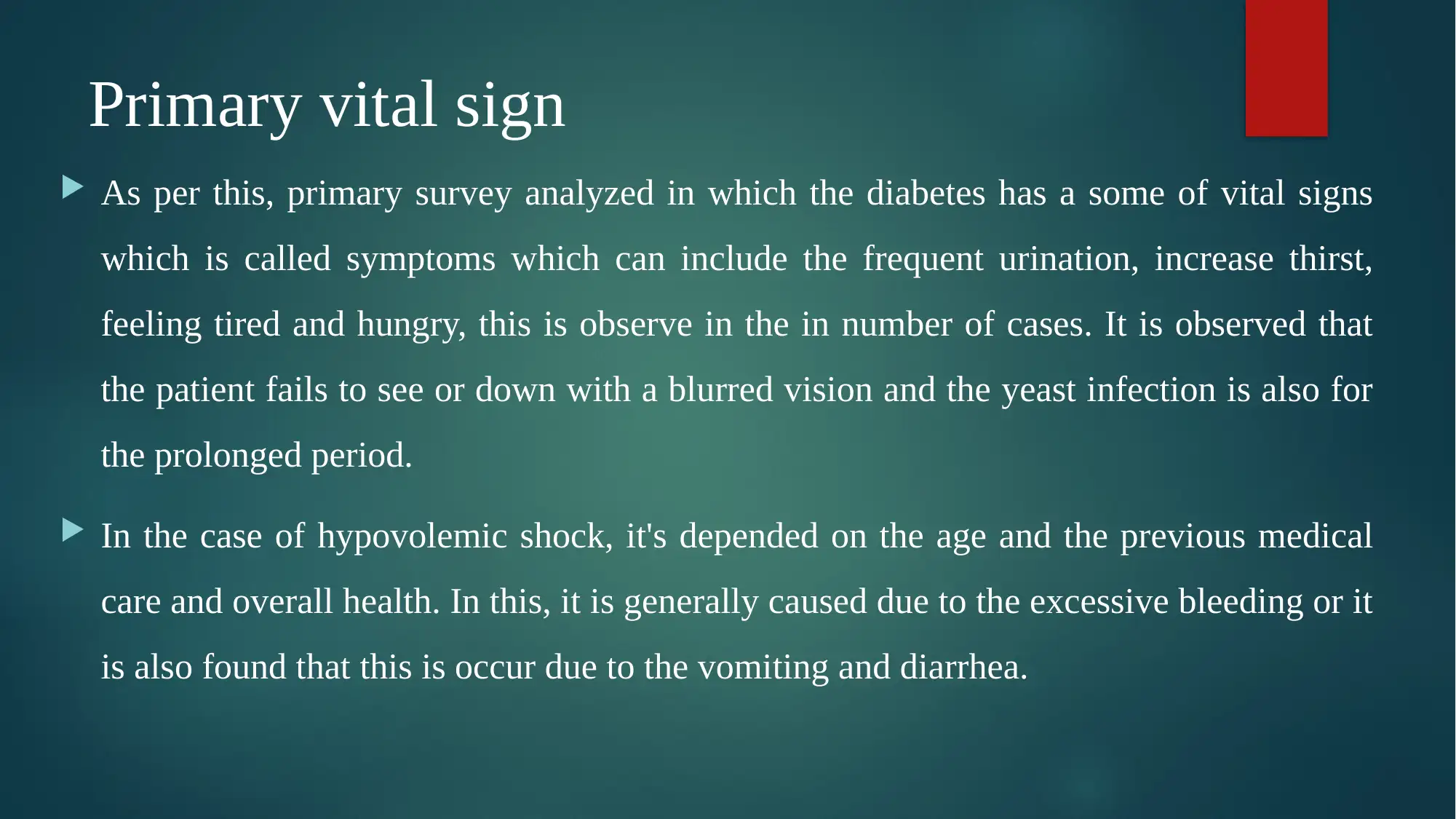
Primary vital sign
As per this, primary survey analyzed in which the diabetes has a some of vital signs
which is called symptoms which can include the frequent urination, increase thirst,
feeling tired and hungry, this is observe in the in number of cases. It is observed that
the patient fails to see or down with a blurred vision and the yeast infection is also for
the prolonged period.
In the case of hypovolemic shock, it's depended on the age and the previous medical
care and overall health. In this, it is generally caused due to the excessive bleeding or it
is also found that this is occur due to the vomiting and diarrhea.
As per this, primary survey analyzed in which the diabetes has a some of vital signs
which is called symptoms which can include the frequent urination, increase thirst,
feeling tired and hungry, this is observe in the in number of cases. It is observed that
the patient fails to see or down with a blurred vision and the yeast infection is also for
the prolonged period.
In the case of hypovolemic shock, it's depended on the age and the previous medical
care and overall health. In this, it is generally caused due to the excessive bleeding or it
is also found that this is occur due to the vomiting and diarrhea.
Paraphrase This Document
Need a fresh take? Get an instant paraphrase of this document with our AI Paraphraser
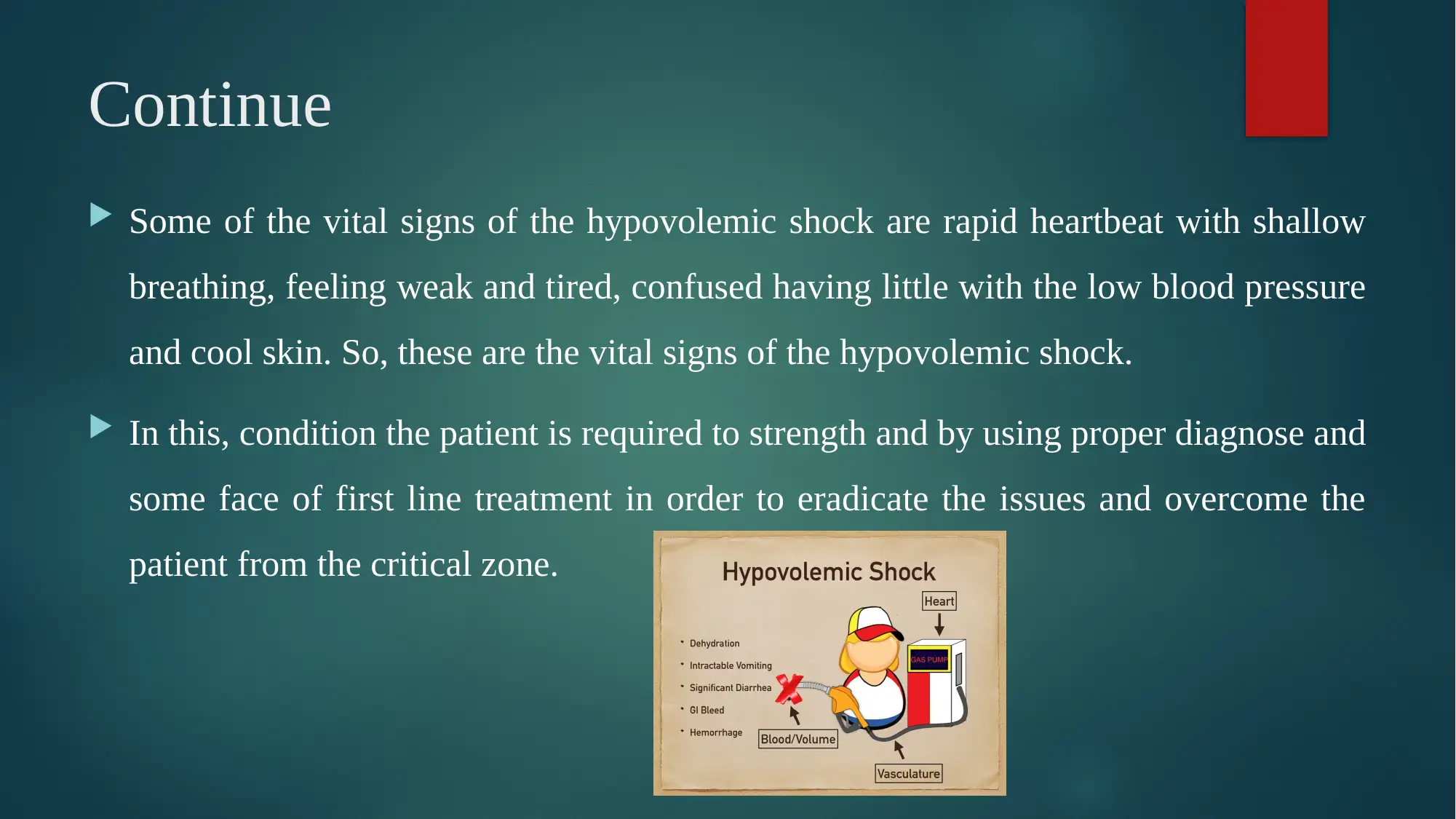
Continue
Some of the vital signs of the hypovolemic shock are rapid heartbeat with shallow
breathing, feeling weak and tired, confused having little with the low blood pressure
and cool skin. So, these are the vital signs of the hypovolemic shock.
In this, condition the patient is required to strength and by using proper diagnose and
some face of first line treatment in order to eradicate the issues and overcome the
patient from the critical zone.
Some of the vital signs of the hypovolemic shock are rapid heartbeat with shallow
breathing, feeling weak and tired, confused having little with the low blood pressure
and cool skin. So, these are the vital signs of the hypovolemic shock.
In this, condition the patient is required to strength and by using proper diagnose and
some face of first line treatment in order to eradicate the issues and overcome the
patient from the critical zone.
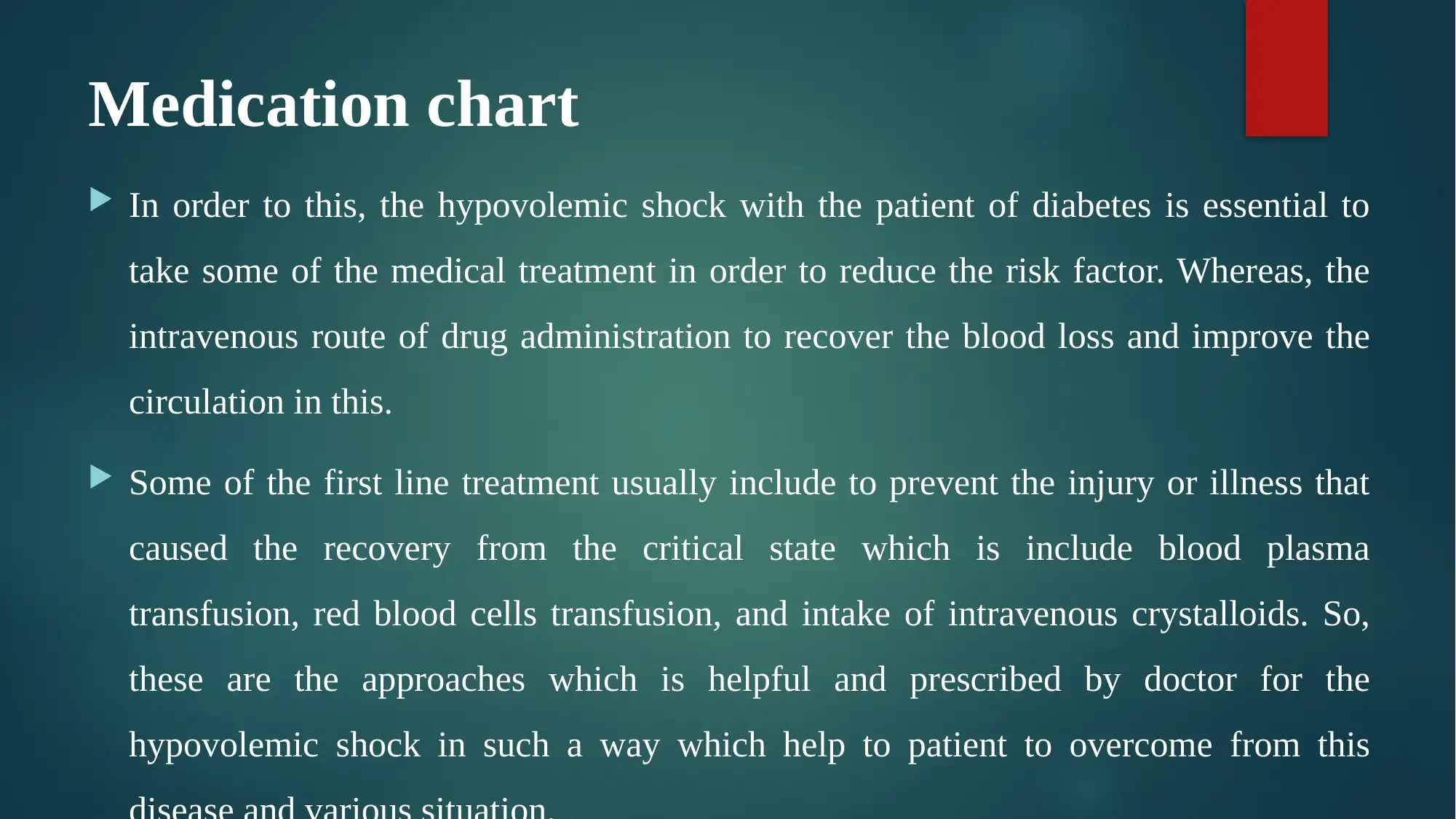
Medication chart
In order to this, the hypovolemic shock with the patient of diabetes is essential to
take some of the medical treatment in order to reduce the risk factor. Whereas, the
intravenous route of drug administration to recover the blood loss and improve the
circulation in this.
Some of the first line treatment usually include to prevent the injury or illness that
caused the recovery from the critical state which is include blood plasma
transfusion, red blood cells transfusion, and intake of intravenous crystalloids. So,
these are the approaches which is helpful and prescribed by doctor for the
hypovolemic shock in such a way which help to patient to overcome from this
In order to this, the hypovolemic shock with the patient of diabetes is essential to
take some of the medical treatment in order to reduce the risk factor. Whereas, the
intravenous route of drug administration to recover the blood loss and improve the
circulation in this.
Some of the first line treatment usually include to prevent the injury or illness that
caused the recovery from the critical state which is include blood plasma
transfusion, red blood cells transfusion, and intake of intravenous crystalloids. So,
these are the approaches which is helpful and prescribed by doctor for the
hypovolemic shock in such a way which help to patient to overcome from this
⊘ This is a preview!⊘
Do you want full access?
Subscribe today to unlock all pages.

Trusted by 1+ million students worldwide
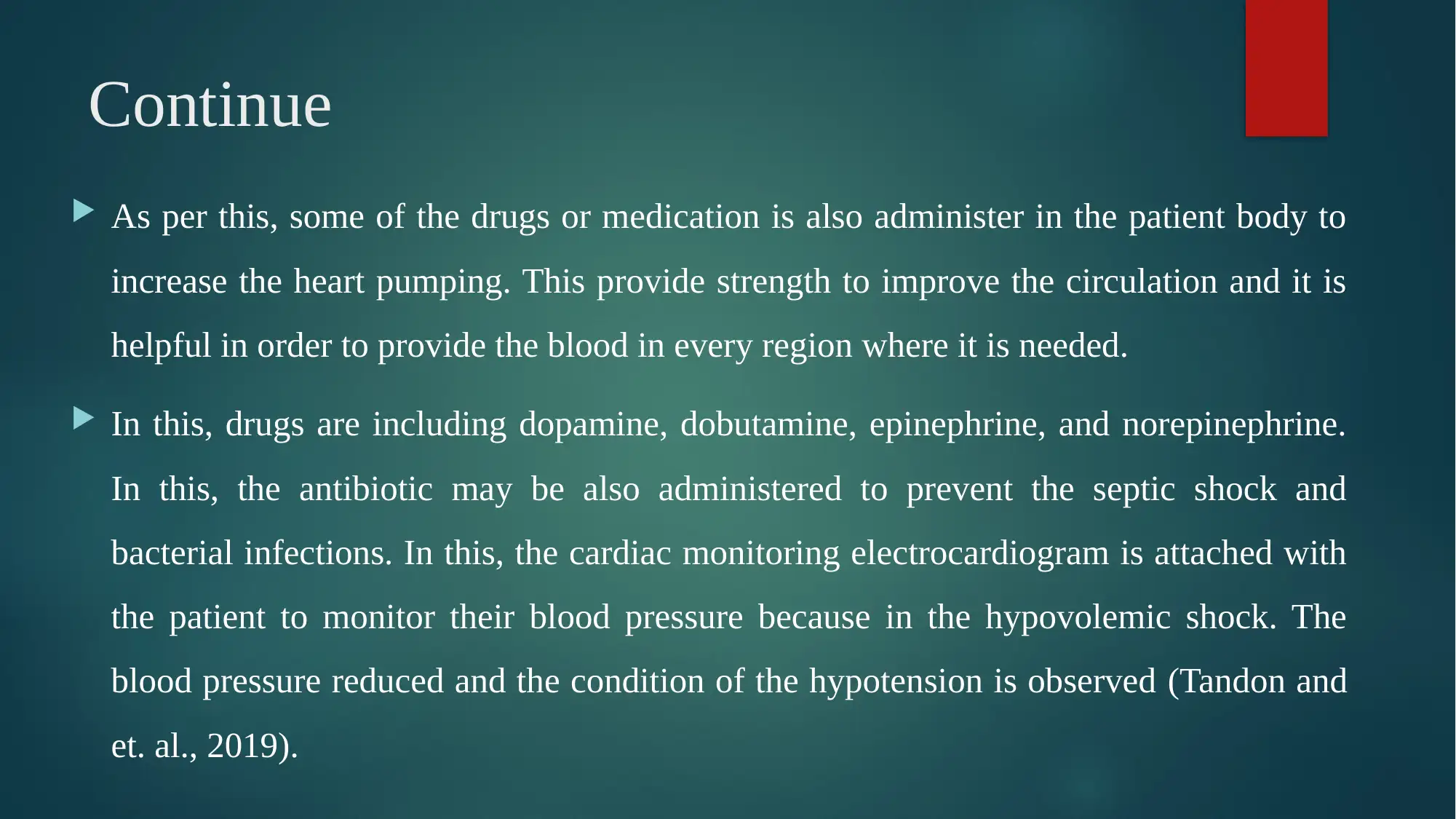
Continue
As per this, some of the drugs or medication is also administer in the patient body to
increase the heart pumping. This provide strength to improve the circulation and it is
helpful in order to provide the blood in every region where it is needed.
In this, drugs are including dopamine, dobutamine, epinephrine, and norepinephrine.
In this, the antibiotic may be also administered to prevent the septic shock and
bacterial infections. In this, the cardiac monitoring electrocardiogram is attached with
the patient to monitor their blood pressure because in the hypovolemic shock. The
blood pressure reduced and the condition of the hypotension is observed (Tandon and
et. al., 2019).
As per this, some of the drugs or medication is also administer in the patient body to
increase the heart pumping. This provide strength to improve the circulation and it is
helpful in order to provide the blood in every region where it is needed.
In this, drugs are including dopamine, dobutamine, epinephrine, and norepinephrine.
In this, the antibiotic may be also administered to prevent the septic shock and
bacterial infections. In this, the cardiac monitoring electrocardiogram is attached with
the patient to monitor their blood pressure because in the hypovolemic shock. The
blood pressure reduced and the condition of the hypotension is observed (Tandon and
et. al., 2019).
Paraphrase This Document
Need a fresh take? Get an instant paraphrase of this document with our AI Paraphraser
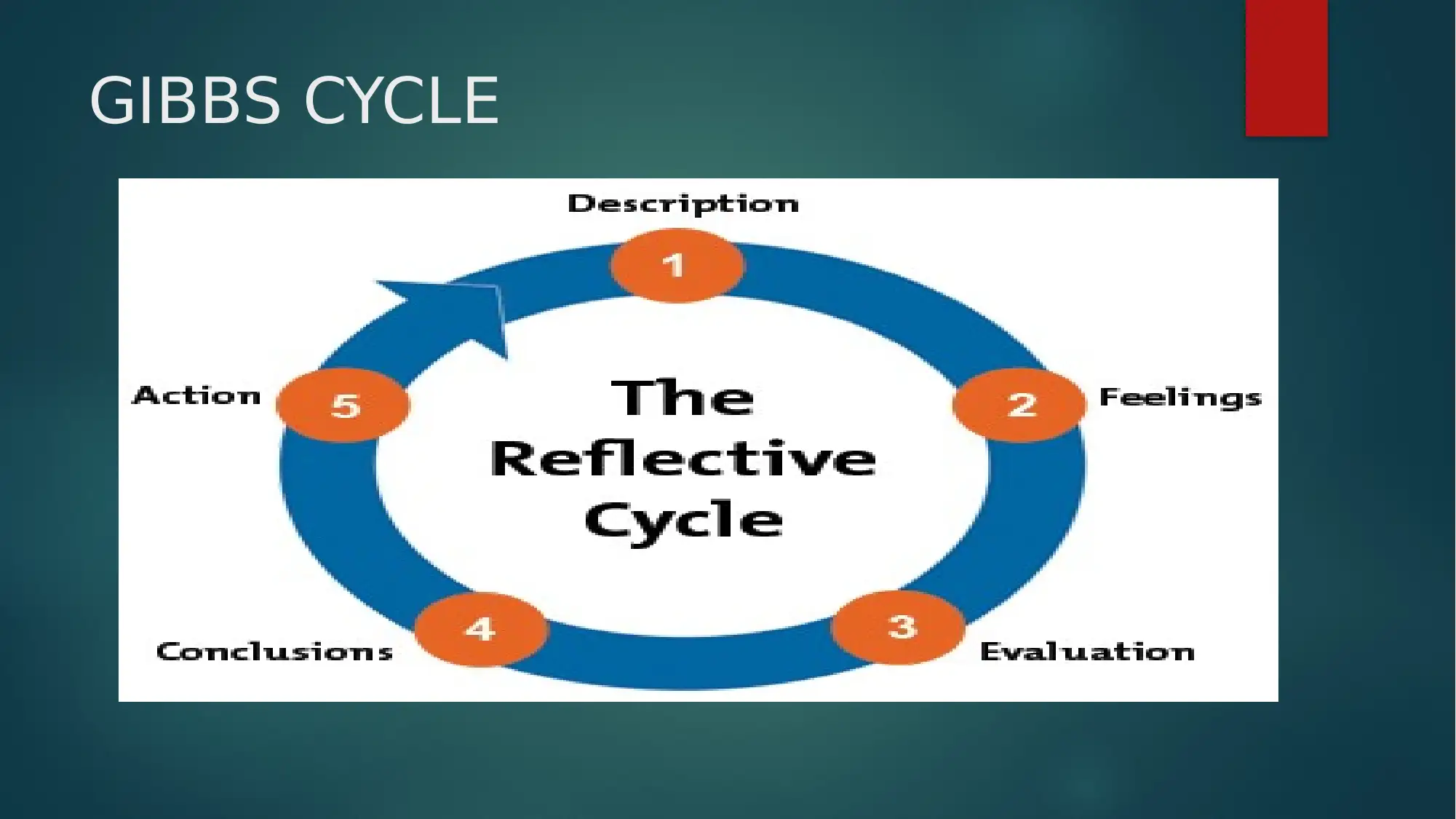
GIBBS CYCLE
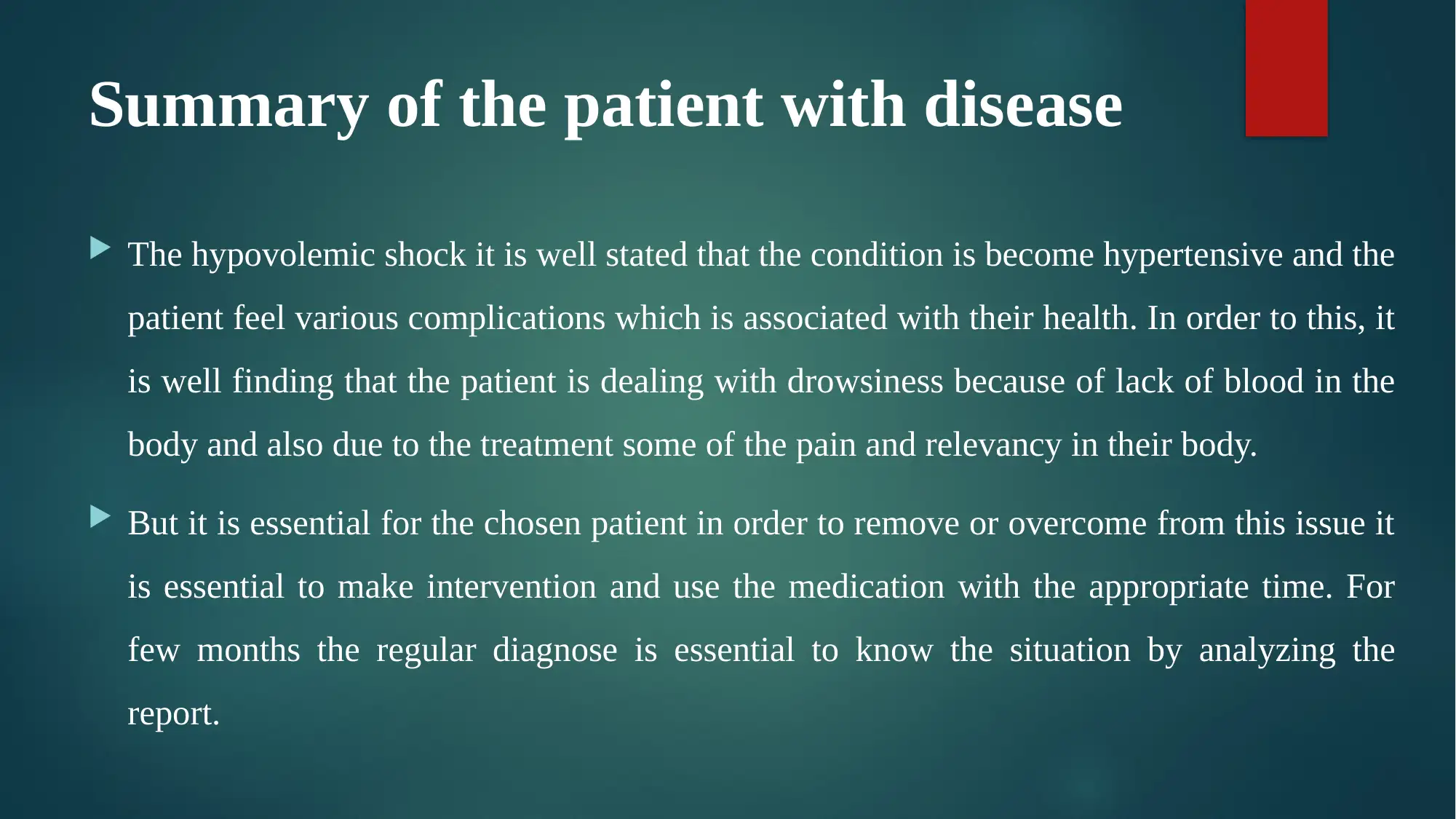
Summary of the patient with disease
The hypovolemic shock it is well stated that the condition is become hypertensive and the
patient feel various complications which is associated with their health. In order to this, it
is well finding that the patient is dealing with drowsiness because of lack of blood in the
body and also due to the treatment some of the pain and relevancy in their body.
But it is essential for the chosen patient in order to remove or overcome from this issue it
is essential to make intervention and use the medication with the appropriate time. For
few months the regular diagnose is essential to know the situation by analyzing the
report.
The hypovolemic shock it is well stated that the condition is become hypertensive and the
patient feel various complications which is associated with their health. In order to this, it
is well finding that the patient is dealing with drowsiness because of lack of blood in the
body and also due to the treatment some of the pain and relevancy in their body.
But it is essential for the chosen patient in order to remove or overcome from this issue it
is essential to make intervention and use the medication with the appropriate time. For
few months the regular diagnose is essential to know the situation by analyzing the
report.
⊘ This is a preview!⊘
Do you want full access?
Subscribe today to unlock all pages.

Trusted by 1+ million students worldwide
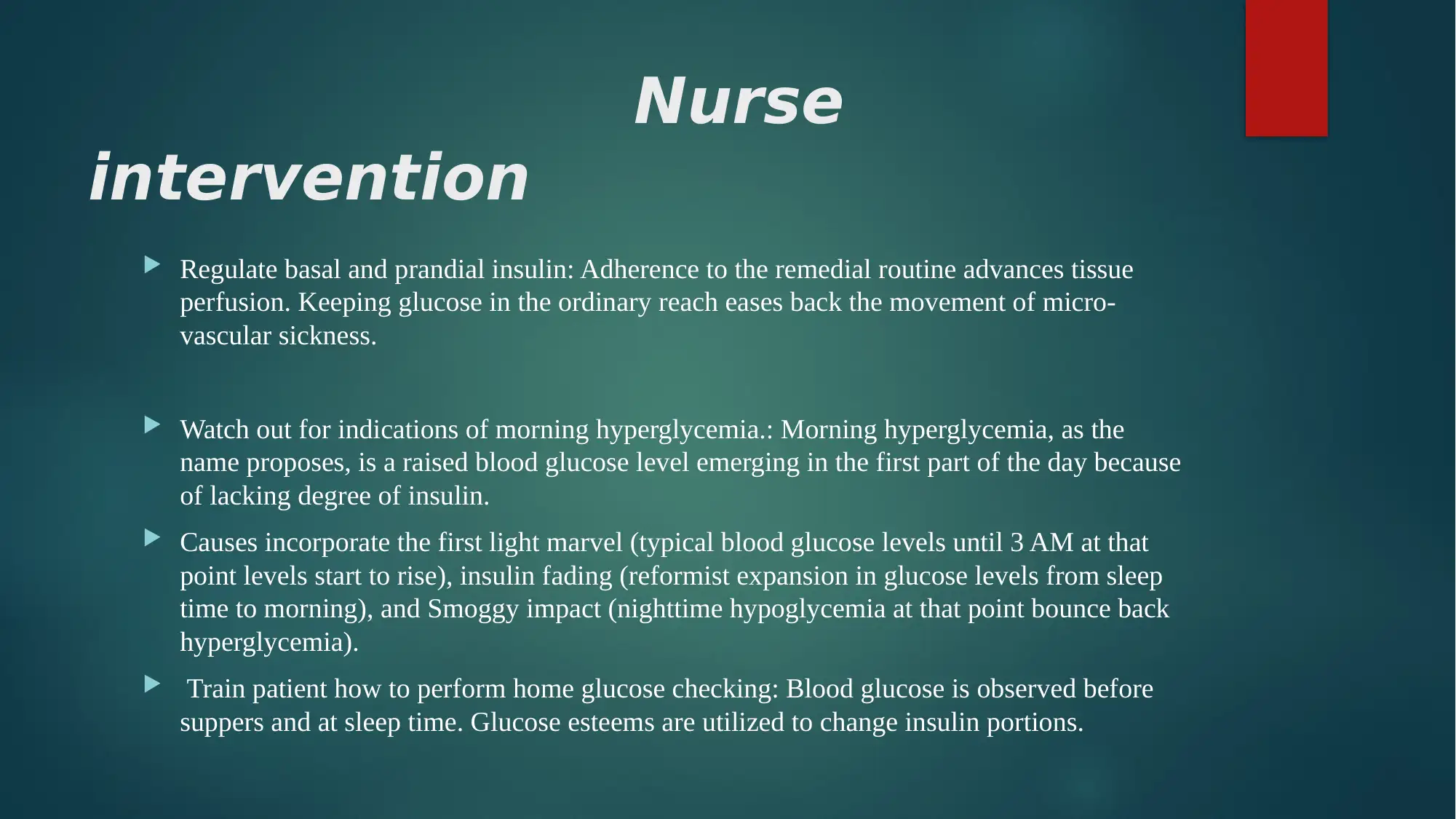
Nurse
intervention
Regulate basal and prandial insulin: Adherence to the remedial routine advances tissue
perfusion. Keeping glucose in the ordinary reach eases back the movement of micro-
vascular sickness.
Watch out for indications of morning hyperglycemia.: Morning hyperglycemia, as the
name proposes, is a raised blood glucose level emerging in the first part of the day because
of lacking degree of insulin.
Causes incorporate the first light marvel (typical blood glucose levels until 3 AM at that
point levels start to rise), insulin fading (reformist expansion in glucose levels from sleep
time to morning), and Smoggy impact (nighttime hypoglycemia at that point bounce back
hyperglycemia).
Train patient how to perform home glucose checking: Blood glucose is observed before
suppers and at sleep time. Glucose esteems are utilized to change insulin portions.
intervention
Regulate basal and prandial insulin: Adherence to the remedial routine advances tissue
perfusion. Keeping glucose in the ordinary reach eases back the movement of micro-
vascular sickness.
Watch out for indications of morning hyperglycemia.: Morning hyperglycemia, as the
name proposes, is a raised blood glucose level emerging in the first part of the day because
of lacking degree of insulin.
Causes incorporate the first light marvel (typical blood glucose levels until 3 AM at that
point levels start to rise), insulin fading (reformist expansion in glucose levels from sleep
time to morning), and Smoggy impact (nighttime hypoglycemia at that point bounce back
hyperglycemia).
Train patient how to perform home glucose checking: Blood glucose is observed before
suppers and at sleep time. Glucose esteems are utilized to change insulin portions.
Paraphrase This Document
Need a fresh take? Get an instant paraphrase of this document with our AI Paraphraser
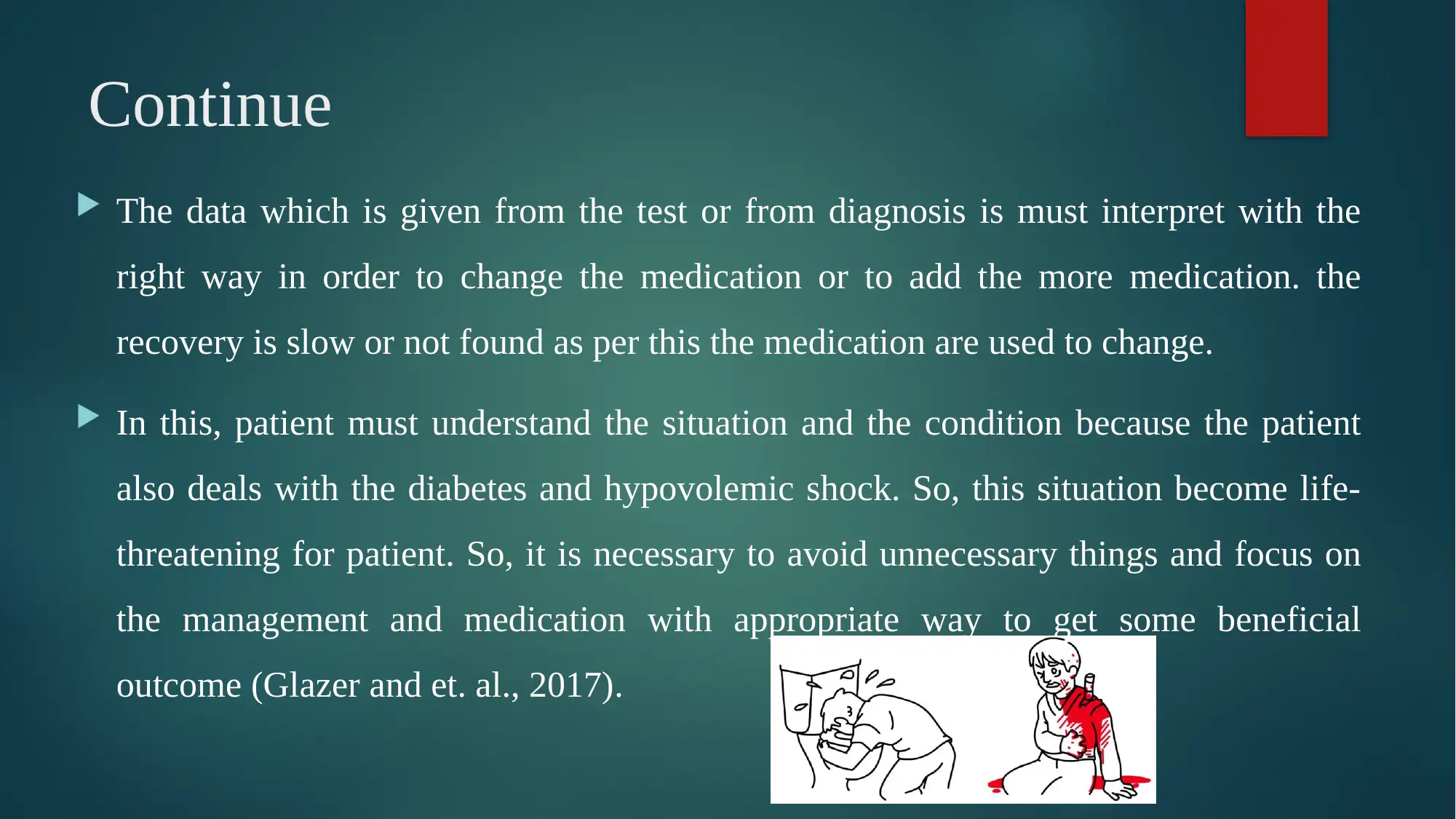
Continue
The data which is given from the test or from diagnosis is must interpret with the
right way in order to change the medication or to add the more medication. the
recovery is slow or not found as per this the medication are used to change.
In this, patient must understand the situation and the condition because the patient
also deals with the diabetes and hypovolemic shock. So, this situation become life-
threatening for patient. So, it is necessary to avoid unnecessary things and focus on
the management and medication with appropriate way to get some beneficial
outcome (Glazer and et. al., 2017).
The data which is given from the test or from diagnosis is must interpret with the
right way in order to change the medication or to add the more medication. the
recovery is slow or not found as per this the medication are used to change.
In this, patient must understand the situation and the condition because the patient
also deals with the diabetes and hypovolemic shock. So, this situation become life-
threatening for patient. So, it is necessary to avoid unnecessary things and focus on
the management and medication with appropriate way to get some beneficial
outcome (Glazer and et. al., 2017).
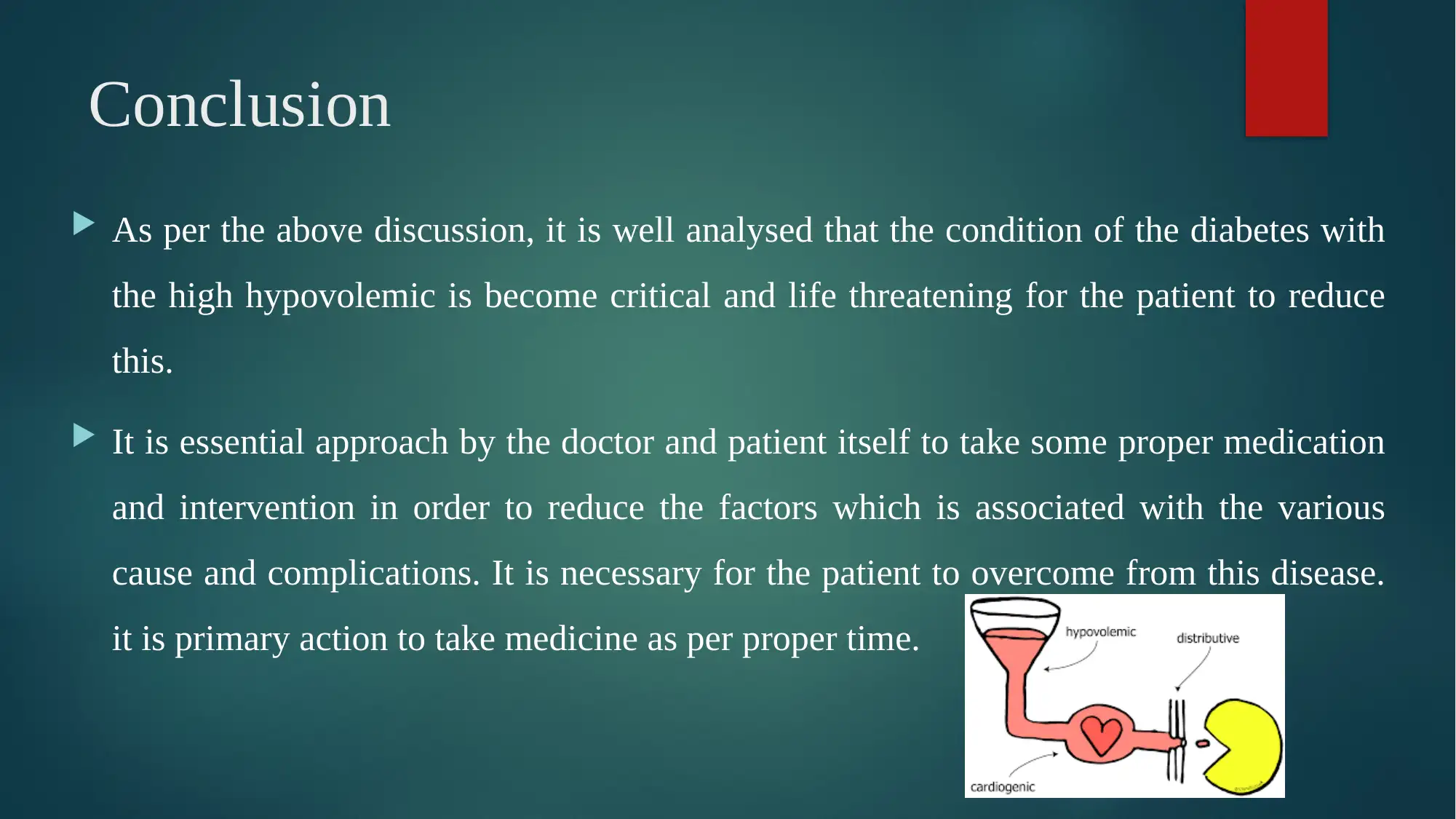
Conclusion
As per the above discussion, it is well analysed that the condition of the diabetes with
the high hypovolemic is become critical and life threatening for the patient to reduce
this.
It is essential approach by the doctor and patient itself to take some proper medication
and intervention in order to reduce the factors which is associated with the various
cause and complications. It is necessary for the patient to overcome from this disease.
it is primary action to take medicine as per proper time.
As per the above discussion, it is well analysed that the condition of the diabetes with
the high hypovolemic is become critical and life threatening for the patient to reduce
this.
It is essential approach by the doctor and patient itself to take some proper medication
and intervention in order to reduce the factors which is associated with the various
cause and complications. It is necessary for the patient to overcome from this disease.
it is primary action to take medicine as per proper time.
⊘ This is a preview!⊘
Do you want full access?
Subscribe today to unlock all pages.

Trusted by 1+ million students worldwide
1 out of 13
Related Documents
Your All-in-One AI-Powered Toolkit for Academic Success.
+13062052269
info@desklib.com
Available 24*7 on WhatsApp / Email
![[object Object]](/_next/static/media/star-bottom.7253800d.svg)
Unlock your academic potential
Copyright © 2020–2025 A2Z Services. All Rights Reserved. Developed and managed by ZUCOL.





